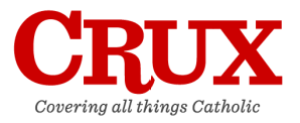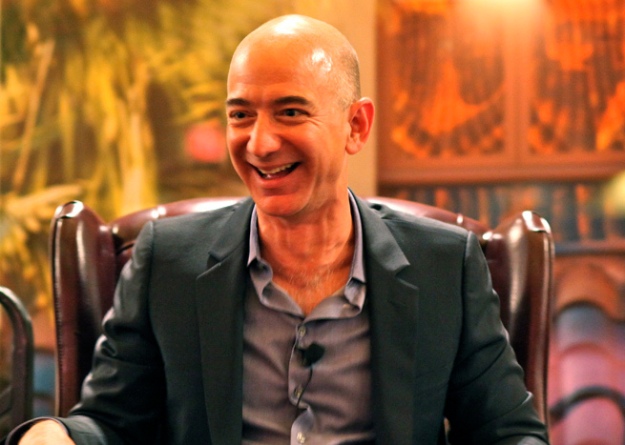 Crux, a standalone website “Covering all things Catholic” that was launched by the Boston Globe in the fall of 2014 (see my WGBHNews.org piece from that time), is shutting down, according to a memo I obtained a little while ago that was written by Globe editor Brian McGrory and managing editor/vice president for digital David Skok. BetaBoston, a vertical that covers the local innovation economy, will be incorporated into the Globe‘s regular offerings and will no longer be a free, standalone site.
Crux, a standalone website “Covering all things Catholic” that was launched by the Boston Globe in the fall of 2014 (see my WGBHNews.org piece from that time), is shutting down, according to a memo I obtained a little while ago that was written by Globe editor Brian McGrory and managing editor/vice president for digital David Skok. BetaBoston, a vertical that covers the local innovation economy, will be incorporated into the Globe‘s regular offerings and will no longer be a free, standalone site.
I can’t say I’ve been a regular reader of Crux, but as a lifelong non-Catholic I’ve found it to offer interesting insights into the Catholic Church—especially John Allen’s column. (Allen will acquire the site, as McGrory and Skok explain below.) My WGBH News colleague Margery Eagan recently won an award for her spirituality column. Overall, the quality—under the direction of editor Teresa Hanafin, who’ll return to the Globe newsroom—has struck me as consistently excellent.
Although you might think the problem was a lack of readers, I’ve been told that Globe executives were not unhappy with the size of the audience. (You could look up the numbers on Compete.com, but they’re probably not very accurate.) Rather, as McGrory and Skok note, the real problem has been finding advertisers.
In any case, it’s a shame that the Globe couldn’t find a way to make Crux work. It was a noble effort. I hope Stat, a far more ambitious Globe-affiliated vertical covering life sciences, is able to avoid a similar fate.
We’ll be talking about this tonight on Beat the Press. And below is the full text of McGrory and Skok’s memo.
We want to bring everyone up to date on a couple of digital fronts.
First, Crux. We’ve made the deeply difficult decision to shut it down as of April 1—difficult because we’re beyond proud of the journalism and the journalists who have produced it, day after day, month over month, for the past year and a half. At any given moment on the site, you’ll find textured analysis by John Allen, the foremost reporter of Catholicism in the world. You’ll find an entertaining advice column, near Margery Eagan’s provocative insights on spirituality. You’ll find Ines San Martin’s dispatches from the Vatican, alongside Michael O’Loughlin’s sophisticated coverage of theology across America, as well as the intelligent work of ace freelancer Kathleen Hirsch. All of it is overseen, morning to night, by editor Teresa Hanafin, who poured herself into the site, developed and edited consistently fascinating stories, and created a mix of journalism that was at once enlightening and enjoyable. Readers and industry colleagues have certainly taken note with strong traffic and awards.
The problem is the business. We simply haven’t been able to develop the financial model of big-ticket, Catholic-based advertisers that was envisioned when we launched Crux back in September 2014.
Let’s be clear that this absolutely can’t and won’t inhibit any future innovations. We in this newsroom and all around the building need to be ever more creative and willing to take risks. We also need to be able to cut our losses when we’ve reached the conclusion that specific projects won’t pay off.
There will be several layoffs involved in the closing of Crux, which is our biggest regret. To the good, we plan to turn the site over to John Allen, who is exploring the possibility of continuing it in some modified form, absent any contribution from the Globe. Teresa will be redeployed in the newsroom, most likely in an exciting new position as an early morning writer for Bostonglobe.com, setting up the day with a look at what’s going on around the region and the web.
The second front is BetaBoston. We’re planning to bring it behind the Globe paywall, making it part of bostonglobe.com, in what amounts to the next logical step in the natural evolution of the site. It began as a standalone destination, and with this move, it will become a fully integrated part of the Globe’s business coverage in practice and presentation.
Beta’s been a key part of our vastly more comprehensive business report. It has allowed us to dramatically expand our reporting on the region’s burgeoning tech scene, with a fresh team of reporters devoted to the news and culture of Kendall Square, the Seaport, and elsewhere. None of that will change. The only thing that will be different is their material will appear on the Globe site, with clicks working against the meter. And we’ll save more than a few dollars on the maintenance of the external URL. We’ll set a date soon.
The reality is, we can’t merely be accepting of change in this environment, we have to seek it out. As always, we’re available for questions, insights, and ideas.
Brian and David





